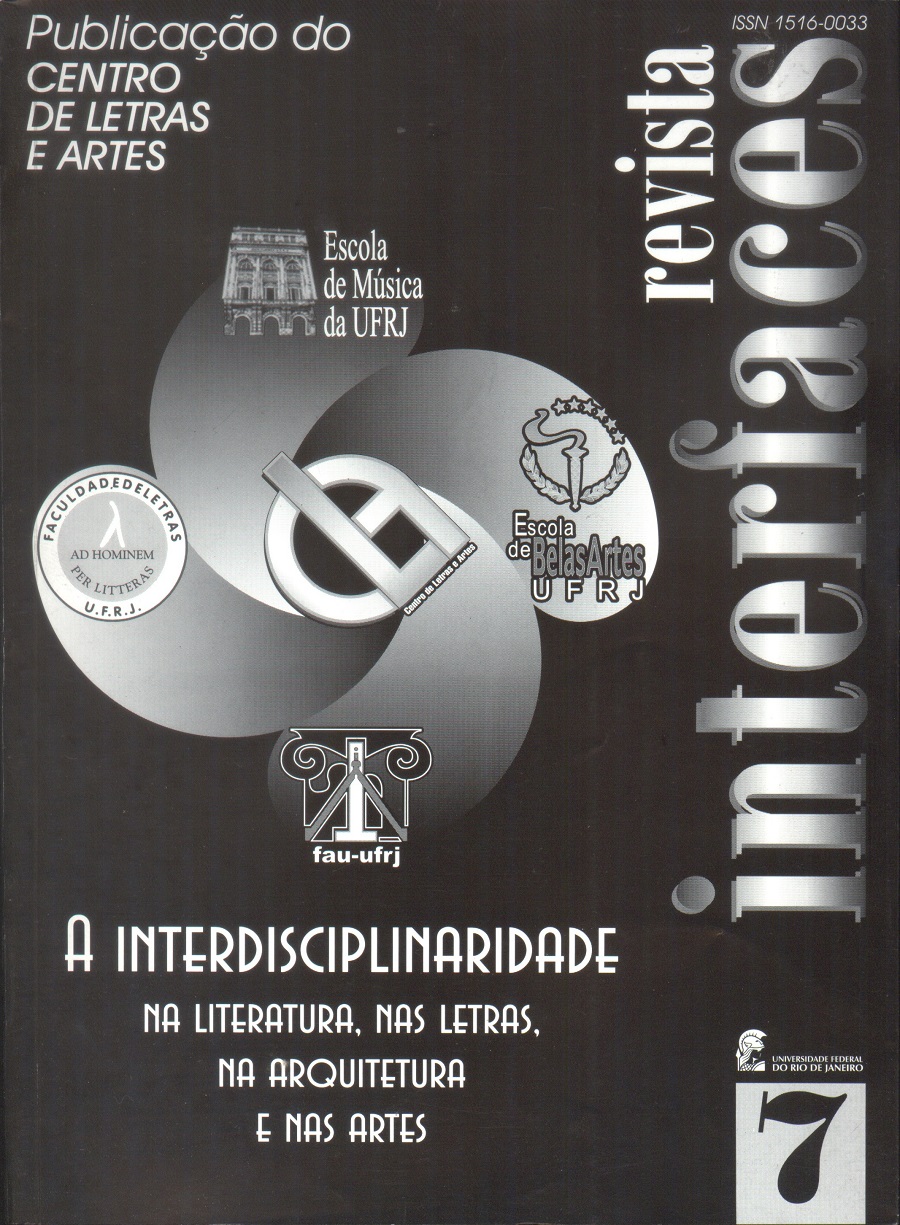Integrando as técnicas de representação gráfica: Um diálogo interdisciplinar
Palabras clave:
Representação Gráfica,Resumen
The following article describes a research project entitled “Integration of Graphical Representation Techniques: An Interdisciplinary Approach with Computer use". This work started on November, 1998, at the School of Fine Arts of UFRJ. Headed by professor Maria Helena Wyllie L. Rodrigues with the help of six other colleagues, it has attracted the interest of two substitute professors as well as undergraduate and graduate students. It offers the opportunity to reflect and to answer questions of great relevance to the present time where the familiarity with computational graphical techniques becomes more and more vital. Although relatively new, the project has gathered a lot of impulse and promises to play an important role in creating a new way of thinking with regards to the teaching of geometry principles of the two and three-dimensional spaces. We describe some of the accomplishments done by the research group in these initial months of work.
Descargas
Citas
AMORIM, A L. (1997) Tecno/og/as CAD no Ensino de Arquitetura e Engenharia. São Paulo, Tese de Doutorado. Escola Politécnica da Universidade de São Paulo.
PROA, S. E. (1995) A Tradição Inovadora. In: ßo/et/m Técnico do Senactv.21n.3, 3-31.
BERTOUNE, G.(1998) Visual Science, an Emerging Discipline. In:Proceedings of the Eigtht InternationalConference on EngineeringGraphics and DescriptiveGeometry. Austin: ISGG. 702-706.
BROMLEY, H. ( 1998) Introduction: Data-Driven Democracy? Social Assessment of Educational Computing.In:H Bromley and M W. Apple (ed.) Education/Technology/Power: Educational Computing as a Social Practice New York: State of New York Press. 1-28.
BRYSON, M & CASTELL, S.(1998) Telling Tales out of School: Modernist, Critical, and Postmodern "True Stories" about Educational Computing. In: H Bromley and M W.
Apple (ed.) Education/Technology /Power: Educational Computing as a Social Practice. New York: State of New York Press. 65-84.
DEMO, P. (1993) Desafios Modernos da Educação. Petrópolis: Vozes.
LYMAN, P.(1995) Is using a Computer Like Driving a Car, Reading a Book, or Solving a Problem? The Computer as Machine, Text, and Culture. In: M A Shields (ed.) Work and Technology in Higher Education Hillsdale, New Jersey: Lawrence Erlbaum Associates, Publishers. 19-36.
PAUL, R (1997) Pseudo Critical Thinking in the Educational Establishment. Obtido no site http://www.sonoma.edu/cthink/Universitv/univlibrarv/Pseudo/lintro.nclk.
RODRIGUES, M. H. W. L. (1996) A Visão Espacial no Contexto da "Gráfica”. In: Anais do Graphica 96: 1Congresso /nfernac/ona/ de Engenharia Gráfica nas Artes e no Desenho; 12 & Simpósio Nacional de Geometria Descritiva e Desenho Técnico. Florianópolis: UFSC, ETFSC, ABPGDDT. 26-34.
______.(1998) Desenho, Conhecimento e Novas Tecnologias. In: Ana/s do Graph/ca 98: 13º Simpósio Nacional de Geometria Descritiva e Desenho Técnico. Feira de Santana: UEFS, ABPGDDT.108-117.
Descargas
Publicado
Número
Sección
Licencia

Esta obra está bajo una licencia internacional Creative Commons Atribución 4.0.
O envio dos trabalhos implica a cessão sem ônus dos direitos de publicação, inclusive em versão eletrônica online. Todos os diretos provenientes da venda da revista ficam cedidos à Revista InterFACES. A republicação dos trabalhos deve mencionar a publicação original em Revista InterFACES.

